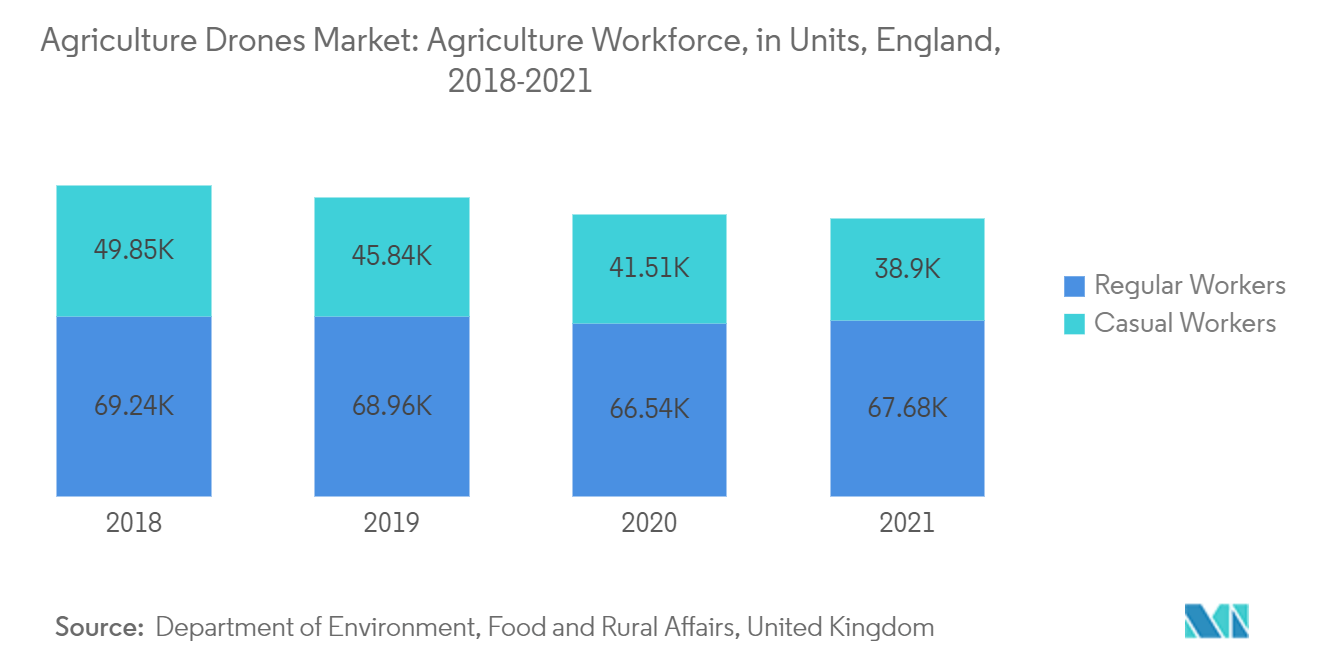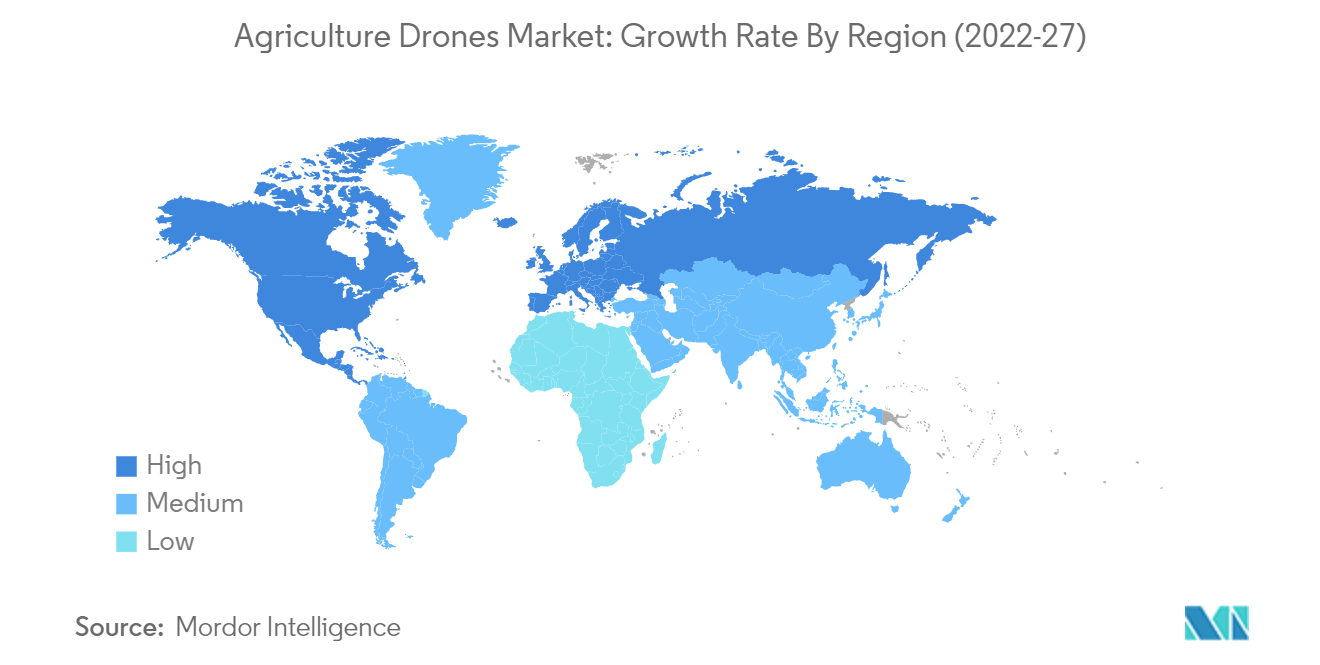Market Trends of Agriculture Drones Industry
This section covers the major market trends shaping the Agriculture Drones Market according to our research experts:
Increasing Adoption of Precision Farming Amid Declining Labour
The concept of precision farming has many advantages for the agricultural sector. Different technologies, such as global positioning systems and guided vehicles, are being developed to create an era of precision farming. The rapid growth of the agricultural sector, which is inculcating technological innovations into its agricultural practices, will continue to drive the market for precision farming and agriculture drones. The labor shortage in agriculture, which has been increasing as a major problem, has also led to more reliance on precision farming tools like agricultural drones.
In the United States, larger farms are increasing their use of precision agriculture and overcoming technology barriers to implementing practices. Fewer Mexican seasonal workers moved across the border during the pandemic, disrupting farms' plans for spring planting and bringing in crops ready for harvest, such as lettuce in California, berries in South Carolina, and tomatoes in Florida.
Owing to the increased labor shortages and higher focus on agriculture sustainability, the use of drones and UAVs in agriculture is anticipated to increase in Europe, and various startups are also emerging in this field in the region. According to the National Farmers' Union of the United Kingdom, as much as USD 73 million of food has been wasted on farms due to a labor shortage, with at least USD 27 million of fruit and vegetables wasted by the half-year of 2022.
According to the National Farmers' Union Survey conducted in 2022, 40% of respondents to a survey of its members indicated they had crop losses due to labor shortages, with farms falling 14% short of the staff they need on average. The countries in Europe look forward to going sustainable, and the region has some of the most stringent laws on the use of pesticides and insecticides. To reduce the use of these chemicals, experiments have already been conducted in Spain and the United Kingdom that involved using aerial spraying with drones. Such experiments and labor shortages are anticipated to determine the benefits of using drones and thus drive the market.

North America Dominates the Market
North America is the largest and most advanced market concerning the adoption of innovative technologies in agriculture. North America has dominated the market for smart farming with new and advanced technologies and innovative ideas in the modern generation. It also improved farm tools with the help of IoT and AI. Being in an urbanized region, the farmers know how to use smartphones and the latest technologies. Farmers can determine the peak conditions of the plants in the field with the help of sensors.
Drones are also more applicable in North America for spraying purposes. The precision technique is useful for data collection on plants in field conditions. The United States was an early adopter of precision farming technologies, which is the primary factor responsible for the region's most significant share in the global market. Even small, family-owned farms, which account for 90% of all farms in the United States, are incorporating drones into their operations by contracting with service providers to deploy UAS for aerial mapping and fertilizer and pesticide crop spraying. Drones are also helping to alleviate labor shortages and improve efficiency in the United States, where the average farmer is 57.5 years old. According to studies, the use of drones in farming activities reduces expenses. According to an American Farm Bureau Federation study, the average U.S. farmer that uses agricultural drones sees a return on investment of USD 12 per acre for maize and USD 2 to USD 3 per acre for soybeans and wheat. A considerable acceptance of modern agricultural methods in Canada is also contributing to the industry's growth.

